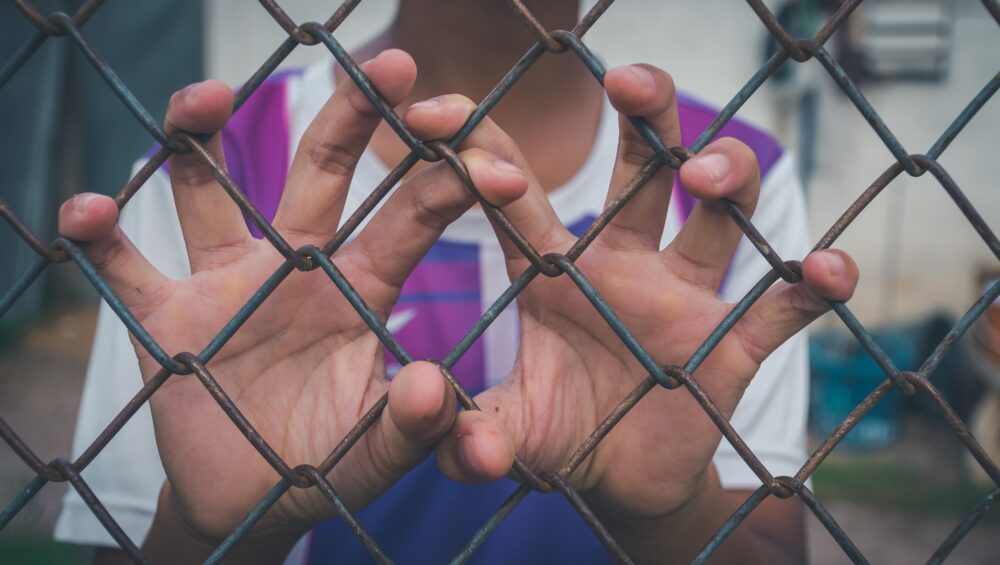Raising awareness is a powerful preventative measure in the fight against sex trafficking. Awareness of the prevalence of sex trafficking and the warning signs can help keep our kids safe from this growing crime.
In addition, embracing the skills of taking risk assessments can help to empower our teens against the lure of traffickers.
But what if you have already been lured into a trafficking situation? How do you get out?
Here are 9 expert tips on how to safely leave a trafficking situation:
Create a safety plan
Anyone can be a victim of sex trafficking, regardless of age, culture, income, or gender. Traffickers can target ANYONE by manipulation and promises of a better life.
But on the contrary, traffickers will never provide a better life. And if you are lured by a trafficker, your personal safety quickly becomes a priority.
When it comes to planning for your safety, focus on these three things:
1. Identifying current and potential risks
2. Creating a plan to reduce risk and harm
3. Knowing your options when safety is threatened
Once you’re in a trafficking situation, it can feel impossible to escape. But having risk assessment skills will help you create a solid safety plan.
9 safety tips when escaping a trafficking situation
Many trafficking survivors will admit they didn’t even know what was truly happening when they were lured. Traffickers are masters of manipulation and abuse, and victims often internalize feelings of powerlessness and hopelessness.
In addition to the points above, the following are 9 safety tips to ensure safety when trying to leave a trafficking situation.
1. Try to determine your location
If you can make a call for assistance, it’s important to determine your whereabouts. If it is safe to go outside, ask someone on the street or in a store for the location. If unable to speak to someone, clues to your location include street signs, mailing envelopes, building addresses, and signs in building lobbies.
2. Keep your documents on or near you
Remember, nobody has the right to take or hold your personal documents (i.e. driver’s license, passport, credit card, birth certificate, bank card). If possible, have copies of your important documents kept in a safe place that you can access, and keep a list of any medications you are taking with your important documents.
3. Memorize a few important phone numbers
In case your phone is taken from you, it’s important to memorize a few important phone numbers of a trusted friend, relative, or organization. If possible, stay in touch with a trusted person when you feel concerned or unsure about your situation.
4. Carry a few important items
If it is possible to carry a bag, pack a small number of important items such as a change of clothes, prepaid calling card, medications, documents, and important phone numbers.
5. Plan an escape route
Think about a plan to escape by rehearsing how you will make your way out. If possible, find potential places to ask for help, such as hospitals, pharmacies, stores, restaurants, or banks.
6. Contact a trusted person
If it is safe to do so, contact a trusted person to inform them of your intention to leave. Have the courage to ask for help if it is safe for you to do so.
7. Taxi or public transit
If it is safe to do so, find a taxi or public transportation option that you can use.
8. Contact the 24-hour Human Trafficking Hotline
You can call the National Human Trafficking Hotline at 1-888-373-7888.
Or you can text the National Human Trafficking Hotline at 233733.
9. Create a special signal
With a trusted person, develop a special signal such as lights flickering on and off, code word, code text message, or a hand signal.
Of course, attempting to leave a trafficking situation might increase the risk of violence. Regardless of your situation, it’s important to trust your judgment in order to ensure your safety.
If you are ever in immediate danger, emergency services are available by calling 9-1-1.
Getting out of a trafficking situation is scary, but help is available. Assessing the situation and your personal safety is key every step of the way.






